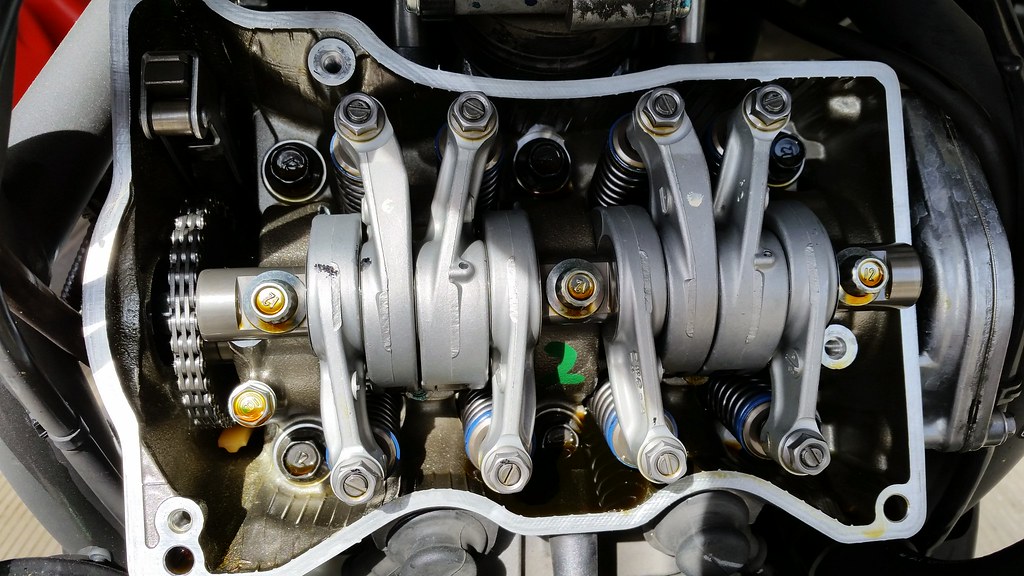OriginalRocket
Member
- Joined
- Oct 4, 2012
- Messages
- 559
- Reaction score
- 3
- Points
- 16
- Location
- Mokena, Illinois, USA
The weather was very nice on March 14th in the far South Chicagoland suburbs. I decided to ready my motos.
I followed the How to written by Antarius in the how to section. Very well written with photos. The hardest part is removing the radiator and all that clips to it in the back.
My valves were all tight. one of the exhaust valves was .003th of an inch tight (.0762mm) Exhaust more out of spec than intake. I used my Honda valve adjustment/10mm locknut combo unit to quickly adjust the valves. That tool is awesome! I refilled the radiator with Honda/Acura Type II premixed blue coolant, Just as I have done with my 2011 125cc PCX. Oil changed @ 300 miles, then again at 3000 miles. And now I will do 5,000 mile OCI
Some photos:


I am going to check the valves again in 8,000 miles (16,000 odometer). Upping the interval if nothing moves. I general ride around in D mode on my DCT. I rarely give full throttle. I enjoy cruising, and moderately accelerating. These 8,000 miles consisted of every type of riding though, including two, four hour highway riding at 75mph. (4,000+ rpm for hours)
I followed the How to written by Antarius in the how to section. Very well written with photos. The hardest part is removing the radiator and all that clips to it in the back.
My valves were all tight. one of the exhaust valves was .003th of an inch tight (.0762mm) Exhaust more out of spec than intake. I used my Honda valve adjustment/10mm locknut combo unit to quickly adjust the valves. That tool is awesome! I refilled the radiator with Honda/Acura Type II premixed blue coolant, Just as I have done with my 2011 125cc PCX. Oil changed @ 300 miles, then again at 3000 miles. And now I will do 5,000 mile OCI
Some photos:


I am going to check the valves again in 8,000 miles (16,000 odometer). Upping the interval if nothing moves. I general ride around in D mode on my DCT. I rarely give full throttle. I enjoy cruising, and moderately accelerating. These 8,000 miles consisted of every type of riding though, including two, four hour highway riding at 75mph. (4,000+ rpm for hours)
Last edited:



